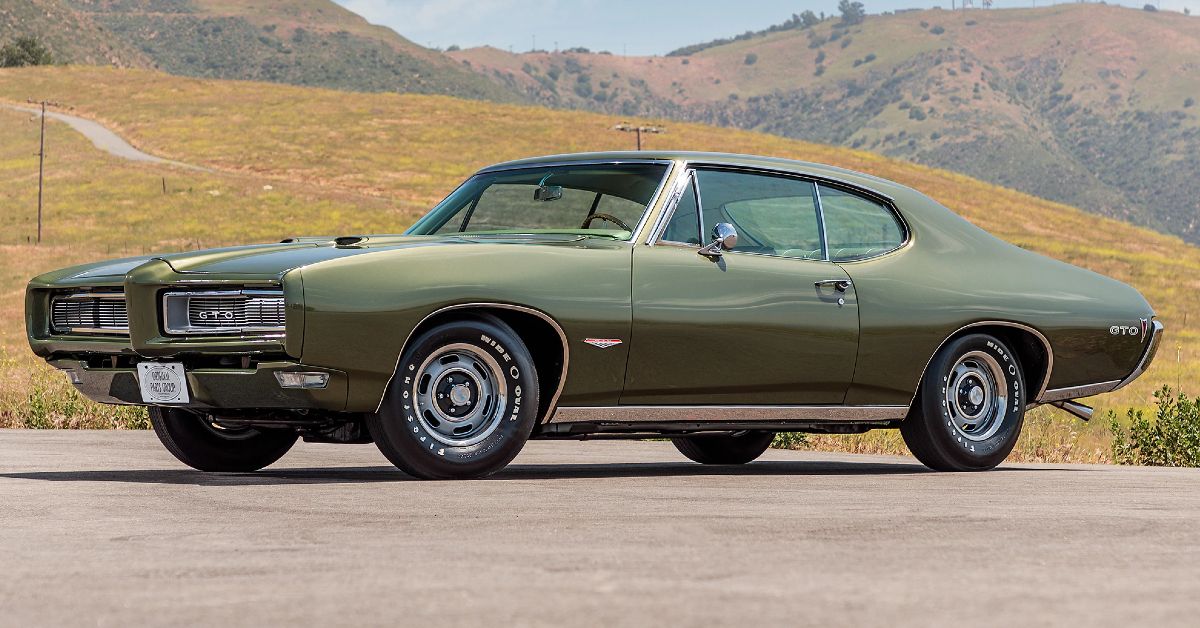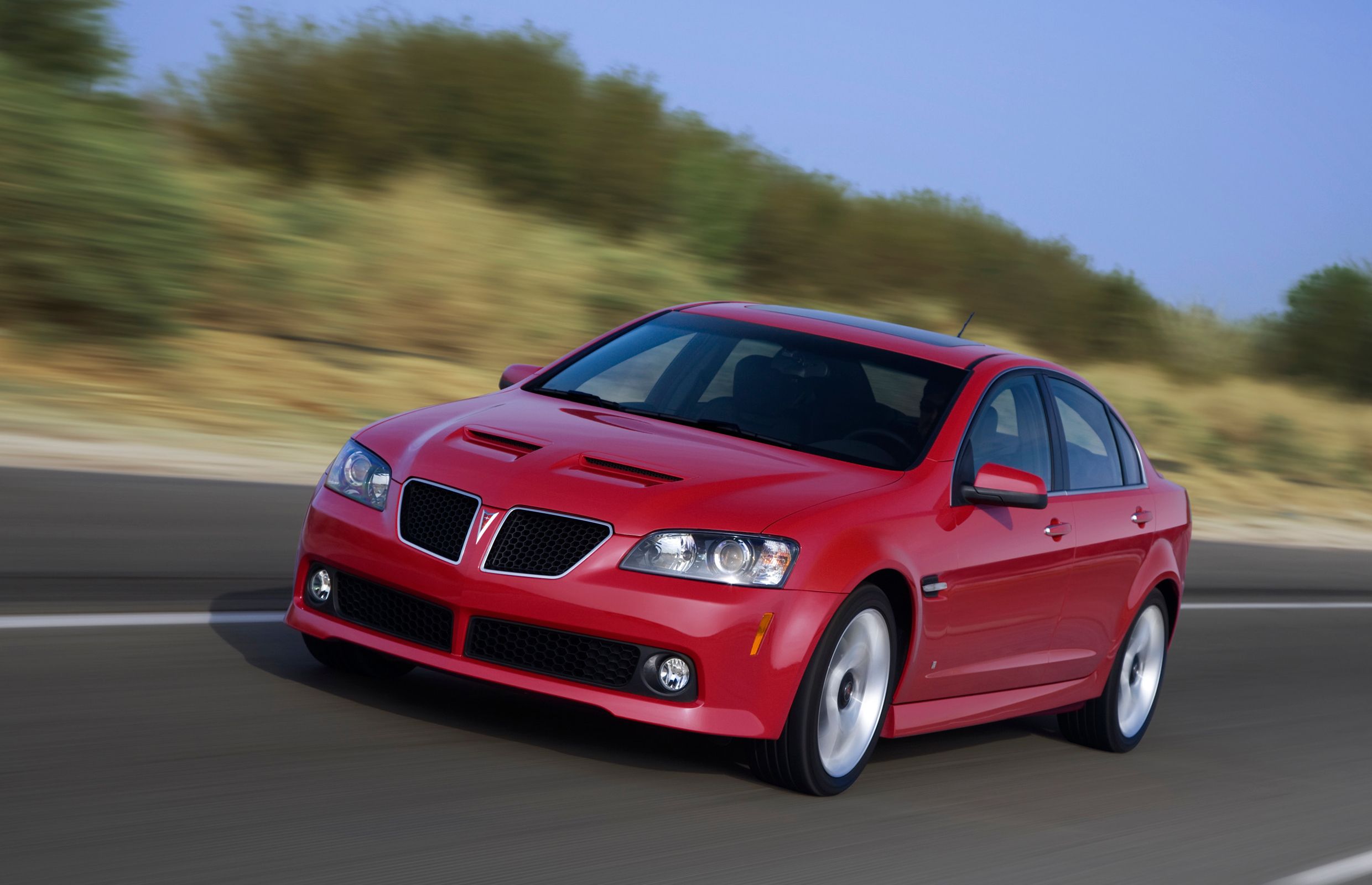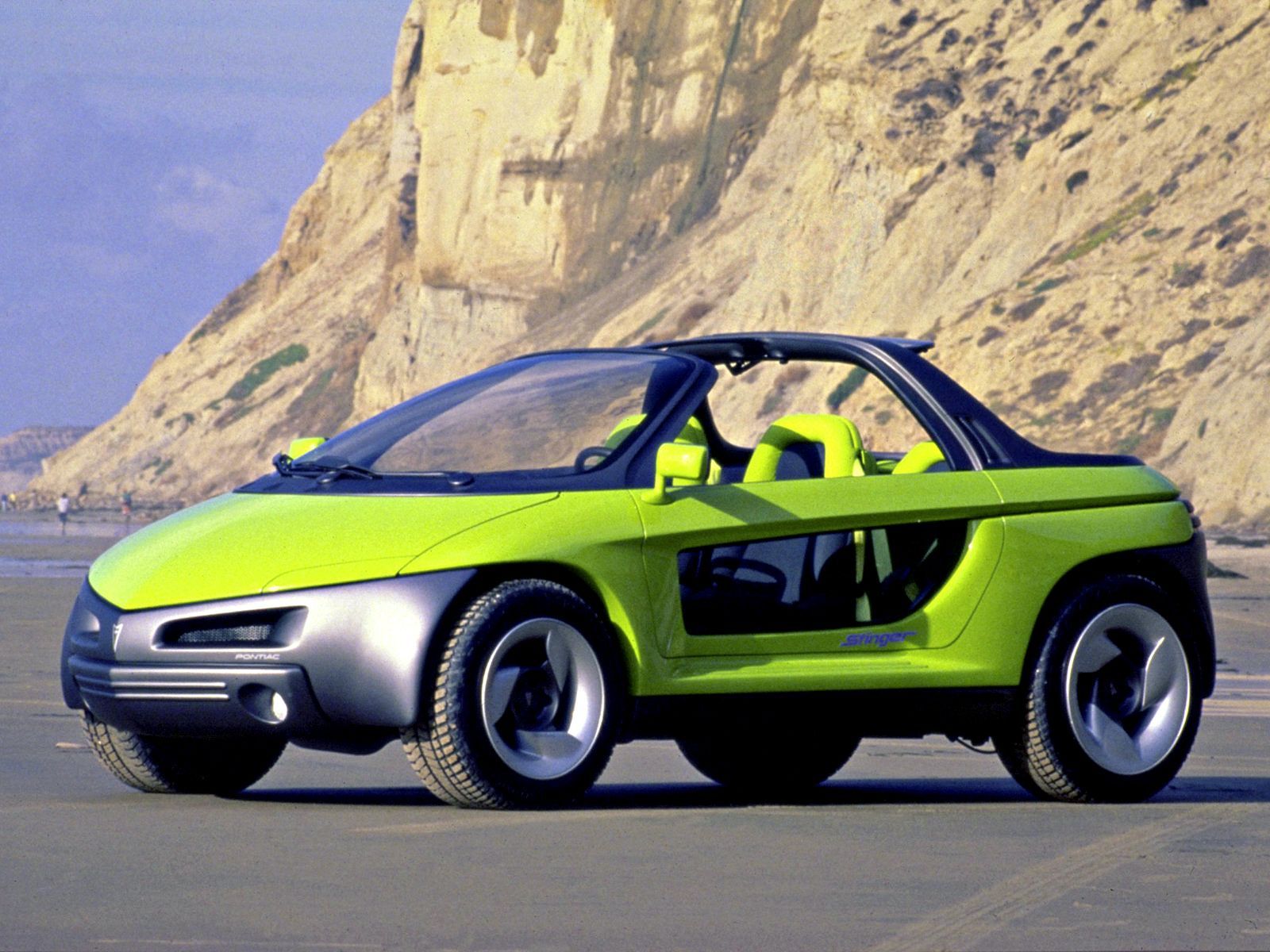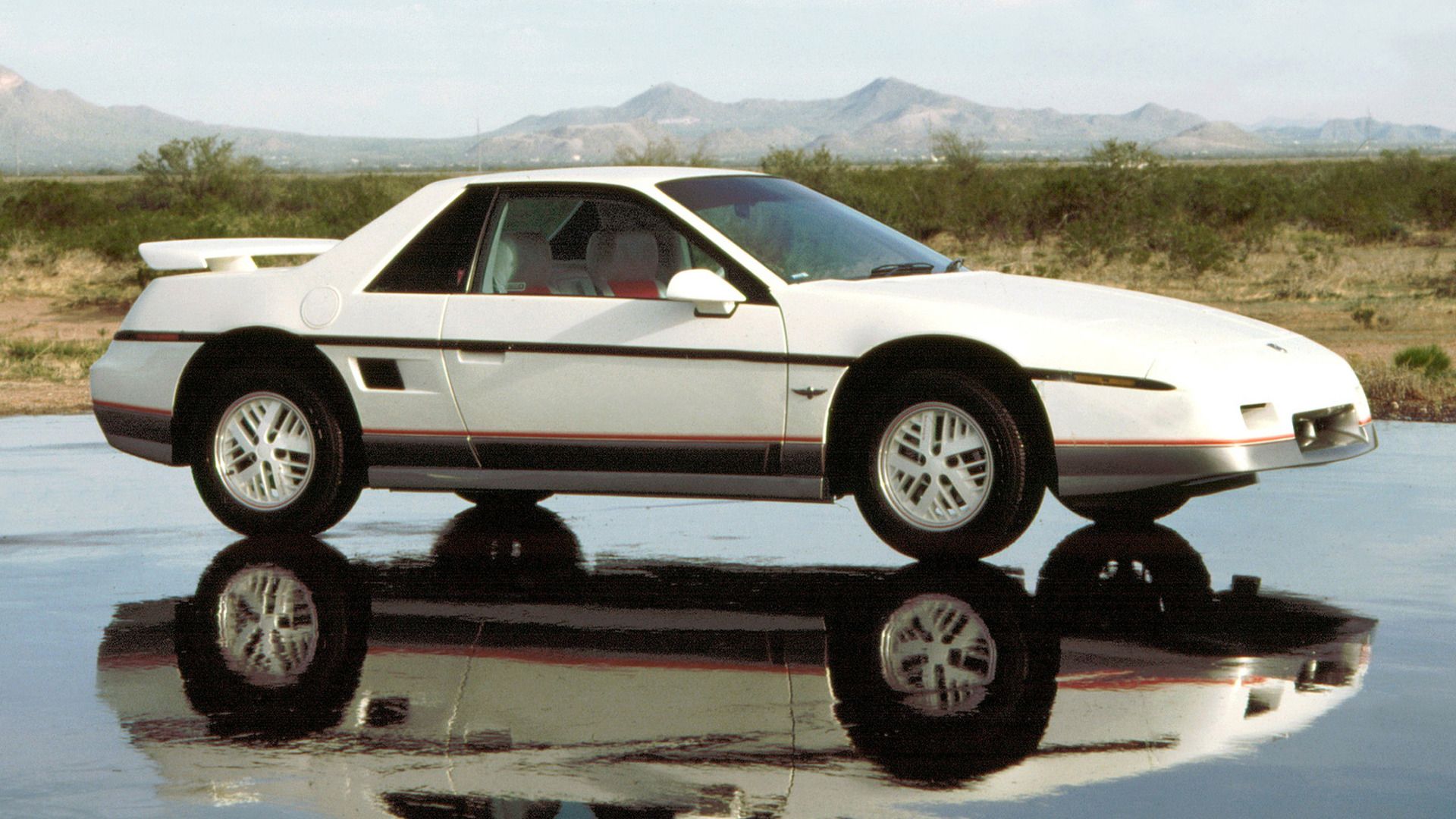It’s hard to wrap your head around just how big the General Motors empire used to be. Even as recently as a couple of decades ago, GM was a true giant. In North America alone, it operated at least eight different brands, all making broadly similar versions of the same cars with different faces and sometimes, special engines. While a lot of these cars became boring and forgettable just as the 2008 financial crisis Thanos-snapped half of GM’s brands away, there was one name that still managed to stand out, and whose termination seems unjustified: Pontiac.
Yes, the same Pontiac that sold millions of J-Body Sunfires and Montana minivans is one brand GM should never have killed off. It was their “fun” brand, their youthful brand, the badge you looked for when you’d been promoted past a Chevy but weren’t yet old enough for a Buick nor wealthy enough for a Cadillac. It was the young man’s car, a rebadged Chevrolet sold with the simple promise of open-road freedom and credibility on the muscle car battlegrounds of the 1960s and 70s.
Pontiac’s fate began to change, right around the time they canceled the Fiero in the late 80s, their cars were beginning to fade into obscurity. Unfairly, mind you, as this was the time they put out the Grand Prix ASC Mclaren and the Bonneville SSEi, two really cool cars you probably forgot about.
But then, less than a decade before its untimely demise, Pontiac started to get exciting again. It launched some weird-looking and innovative cars in the Aztek and the Vibe, and some genuinely great performance cars in the Solstice, GTO and G8. But it was not to be, and in 2009, Pontiac was shut down.
Now, though, there are talks of GM wanting to revive some of its old names. They have confirmed an upcoming all-electric Hummer, so really, anything is possible.
But Hummer shouldn’t be the only GM nameplate resurrected in the 2020s. Pontiac should also make a hero's comeback, and here’s why.
GM’s Performance Cars Need A New Home
General Motors is on a performance streak at the moment. In the last few years, we've seen them create some seriously impressive vehicles, like the Buick Regal GS, the old Cadillac ATS-V and CTS-V, the Chevrolet SS, and most recently, the C8 Corvette.
However, the Buick Regal GS is dead, the Chevy SS is also dead and Cadillac seems to have lost the plot somewhere with their new sedans, the CT4 and CT5. Still, at least they promised us a V8 and a manual transmission in the upcoming "Blackwing" edition of the CT5-V.
GM has struggled to market its grey-import sports cars, like the Opel-based Regal GS and the Holden-based Chevrolet SS and previous Pontiac G8 and GTO. To be fair to GM, those cars did lack much in the way of distinctive, recognizable styling, which sells cars in North America better than we'd probably like to admit.
It also struggles with its domestically-made performance cars - at least, ones that don't use nameplates from the 1960s - but if it could relaunch the Pontiac name as a dedicated performance brand, it would have a single place to design, market and sell all of its performance-oriented vehicles, freeing up Cadillac to return to its former glory as the pinnacle of American luxury.
GM has some of the best steering and suspension tuning in the auto industry at the moment, and it's being woefully underused in only the Chevy Camaro and the Cadillac sedans. A new Pontiac sports sedan built on this architecture, with more basic materials and less tech than the Cadillacs and sold at a lower price could be a big hit, and give other performance underdogs like the Genesis G70 and Kia Stinger GT some serious competition.
GM could even relaunch the Pontiac Solstice as a competitor to the Mazda MX-5, Fiat 124 Spider and the upcoming new Toyota 86/Subaru BRZ. There's so much potential for Pontiac as a performance brand that it's a wonder GM ever bothered making Cadillac the "fast car" badge in the first place.
A Place For New Ideas In A Changing Automotive Industry
If performance doesn't work out, or if GM doesn't want to pigeon-hole New Pontiac into a performance-only brand, it could also pull from Pontiac's other specialty of the past: forward-thinking and wild new ideas, like the 1989 Stinger concept pictured above, that lead to cars that might not thrill our inner racing driver, but that sell well and push the industry forward.
The obvious place to start with this would be a revival of the Aztek, if not in name than at least in spirit. The Aztek was too far ahead of its time, but it predicted the massive crossover boom that was to come and would probably be a massive success if it were to return in the 2020s, with cleaner styling and less ridiculous gimmicks. Modern cars don't need tailgate tents or branded air mattresses to sell in large numbers.
Another surprisingly innovative car from Pontiac's past was the Vibe hatchback. It was a joint venture between Pontiac and Toyota, and the Vibe ran on Toyota Matrix running gear, including the high-revving 2ZZ-GE 4-cylinder engine for the Vibe GT, automatic and manual transmissions and chassis components. It unintentionally became one of GM's most reliable vehicles (thanks, Toyota) and it sold nearly 400,000 units in the US during its 9-year run.
Failing all this, Pontiac could become GM's EV brand for the new electrified era of cars. It's no secret nor surprise that the auto industry is moving towards mass electrification. Soon, more and more EVs will start to pop up in showrooms until it becomes the new standard, and internal combustion engines will be relegated to specialty items for enthusiasts. This change will take decades, but it's the direction the industry is going, and much like how Volvo is using its Polestar brand to launch a whole lineup of premium EVs, GM could do the same with Pontiac. If they're already committed to making an electric Hummer, they can make EVs out of anything.
Nostalgia Sells
The 80s and 90s are cool. Younger people, who were maybe born in that time but too young to remember it, or missed out on it completely, love to look back at those decades with fondness, admiration and critically, nostalgia - even if it's for a time they don't remember. We love classic video games and movies, synthesizers and baggy sweaters. We are also growing increasingly fond of cars from that era; the Corolla AE86, the Mazda Miata, the Toyota MR2, the Nissan S-chassis, old Honda Civics and CRXs, the Fox Body Mustang, the third-generation Camaro and, of course, the Pontiac Fiero.
If GM relaunches Pontiac, it should avoid using the bland alphanumeric names from the 2000s (G5, G6, G8) and instead bring back old nameplates from cars that people used to love. A new Fiero, based on the Corvette C8 architecture but shortened and with a turbo four-cylinder engine would be an amazing sports car, lighting a fire underneath Lotus that it hasn't felt since its F1 days, and at the right price point it would sell in the hundreds of thousands. Think of it as an American Alpine A110.
Pontiac could also bring back some other well-known names on modern cars, like Grand Prix and Firebird. A new Grand Prix, based on the Cadillac CT5 and a Firebird based on the Camaro (which we have seen in renders and done by custom shops, but never by GM themselves) could be excellent competition in the stagnating muscle car segment and could bring an excitement back to GM that the brand seems to slowly be losing.
In short, Pontiac should come back now to cash in on the popularity of "Radwood-era" cars, but it would also be putting out some potentially groundbreaking new models in the process. GM marketing, if you're reading this, just make sure to use enough synthwave and vector graphics in your advertising so that dealers can actually move these things.




